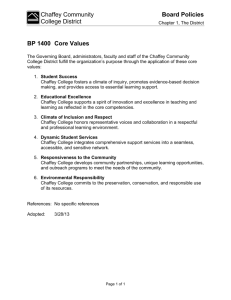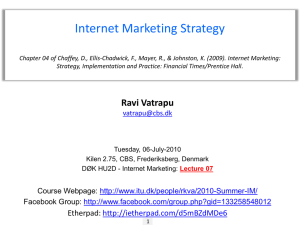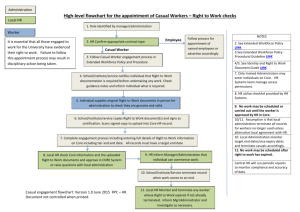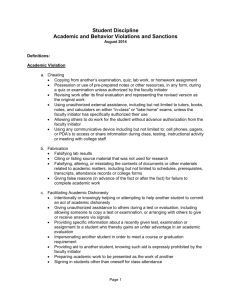Control Systems Technology
advertisement
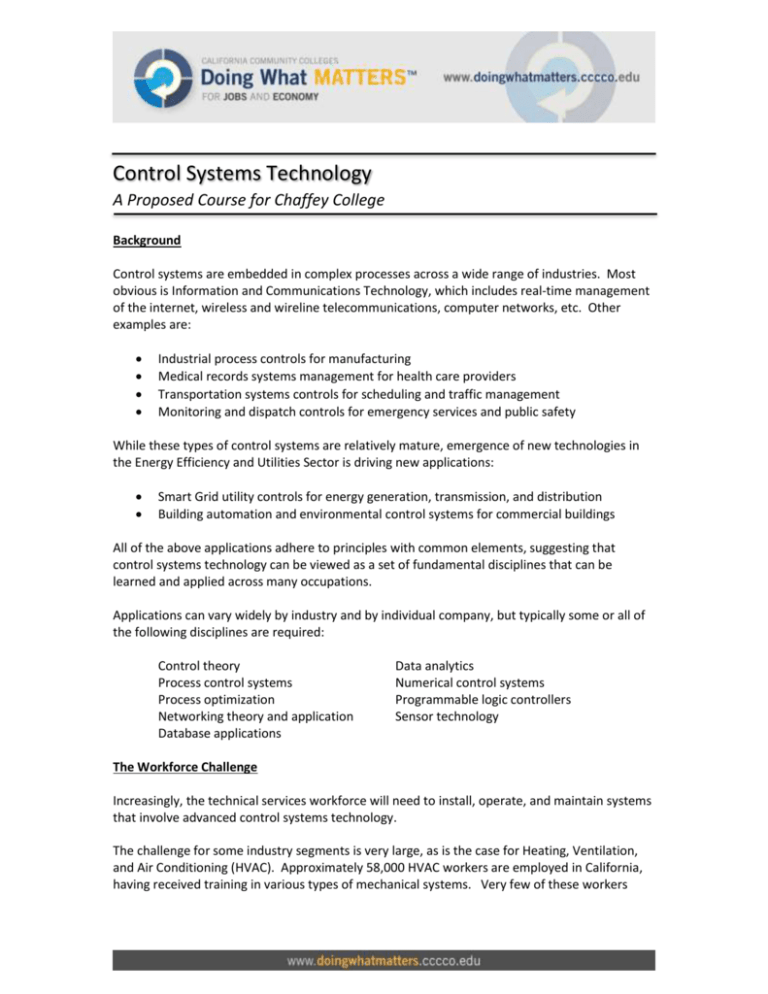
Control Systems Technology A Proposed Course for Chaffey College Background Control systems are embedded in complex processes across a wide range of industries. Most obvious is Information and Communications Technology, which includes real-time management of the internet, wireless and wireline telecommunications, computer networks, etc. Other examples are: Industrial process controls for manufacturing Medical records systems management for health care providers Transportation systems controls for scheduling and traffic management Monitoring and dispatch controls for emergency services and public safety While these types of control systems are relatively mature, emergence of new technologies in the Energy Efficiency and Utilities Sector is driving new applications: Smart Grid utility controls for energy generation, transmission, and distribution Building automation and environmental control systems for commercial buildings All of the above applications adhere to principles with common elements, suggesting that control systems technology can be viewed as a set of fundamental disciplines that can be learned and applied across many occupations. Applications can vary widely by industry and by individual company, but typically some or all of the following disciplines are required: Control theory Process control systems Process optimization Networking theory and application Database applications Data analytics Numerical control systems Programmable logic controllers Sensor technology The Workforce Challenge Increasingly, the technical services workforce will need to install, operate, and maintain systems that involve advanced control systems technology. The challenge for some industry segments is very large, as is the case for Heating, Ventilation, and Air Conditioning (HVAC). Approximately 58,000 HVAC workers are employed in California, having received training in various types of mechanical systems. Very few of these workers have had significant training in control systems technology, and even fewer have learned the basic energy efficiency measures that these technologies enable. An additional 2,000 HVAC workers are needed in California annually through 2017, the vast majority of whom will enter the workforce without significant training in control systems technology. Identifying the combined workforce skills requirements across all industries is beyond the scope of this brief document. But on the basis of HVAC alone, the workforce challenge is compelling, especially considering California’s energy efficiency mandates arising from AB 32, the California Global Warming Solutions Act. Proposed Solution A new course at Chaffey College is proposed to add new knowledge, skills, and abilities (KSAs) for multiple occupations, delivering control systems technology fundamentals that can be applied across multiple industry segments. Existing workers are by far the largest population for which these new KSAs are needed. At the same time, this population offers the greatest opportunity to engage employers in identifying priority occupations and defining specific KSAs. Further, incumbent worker training can be funded outside the college apportionment process, providing a cost-effective low-risk approach for innovation in courses serving mainstream community college students. So, the proposed solution has two phases: 1. Develop and deliver incumbent worker training to meet immediate industry needs 2. Re-purpose incumbent worker training to create a new credit course for mainstream college students As related to Chaffey certificates and degrees, a control systems technology course potentially can be integrated into Industrial Electrical Technology, CIS-Networking, Engineering Technology, and perhaps other programs. Next Steps Faculty consideration of the workforce challenge and proposed solution is the first and most essential step. Assuming that faculty is supportive and engaged, the next step is to develop a hypothetical course description that leverages current Chaffey offerings and other available resources (e.g. US Department of Energy, Department of Labor, and National Science Foundation) and offerings at other community colleges. Skills Panels or DACUMs with employer groups will add depth to the course description and identify gaps. Funding for course development and incumbent worker training can be facilitated in parallel with these activities. Contact Jim Caldwell, Sector Navigator – Energy Efficiency & Utilities jcaldwell@workforceincubator.org (925) 899-2665




